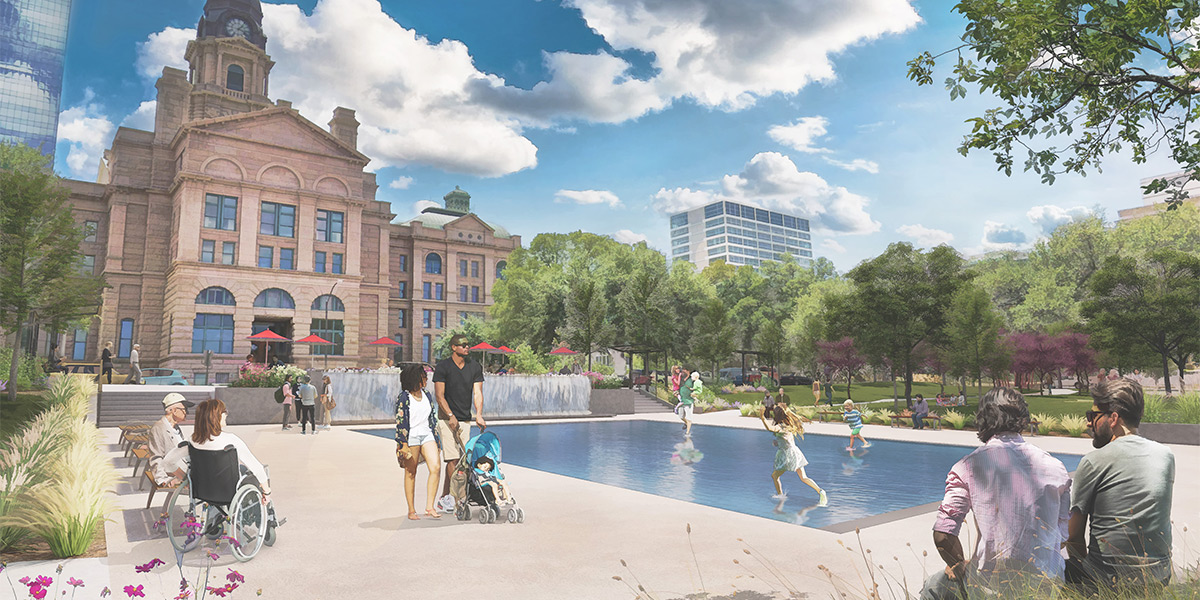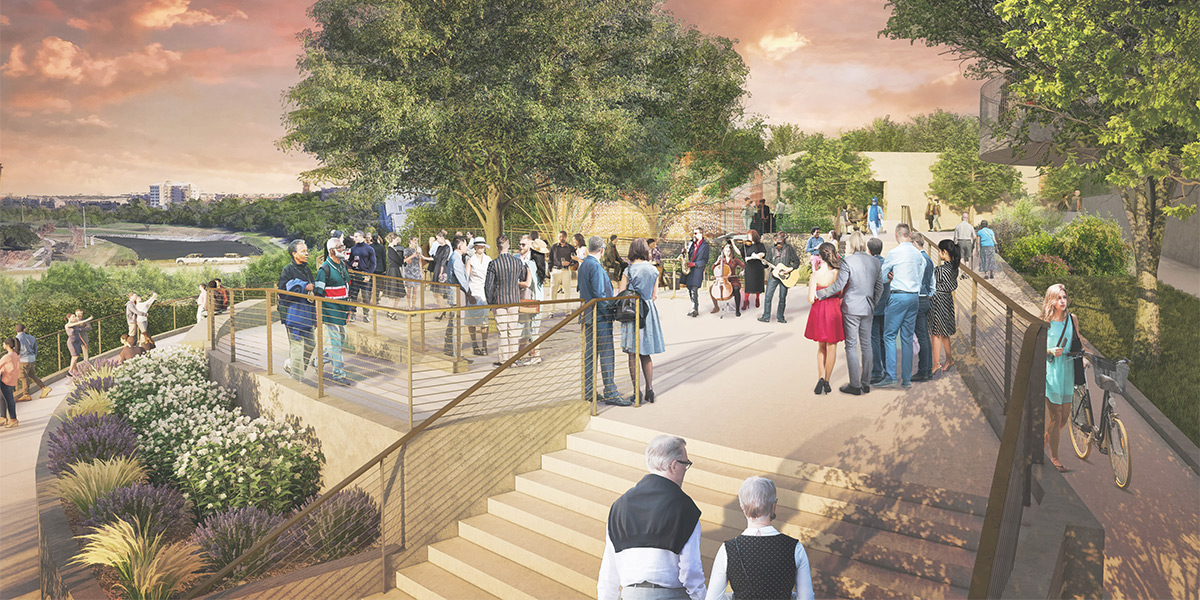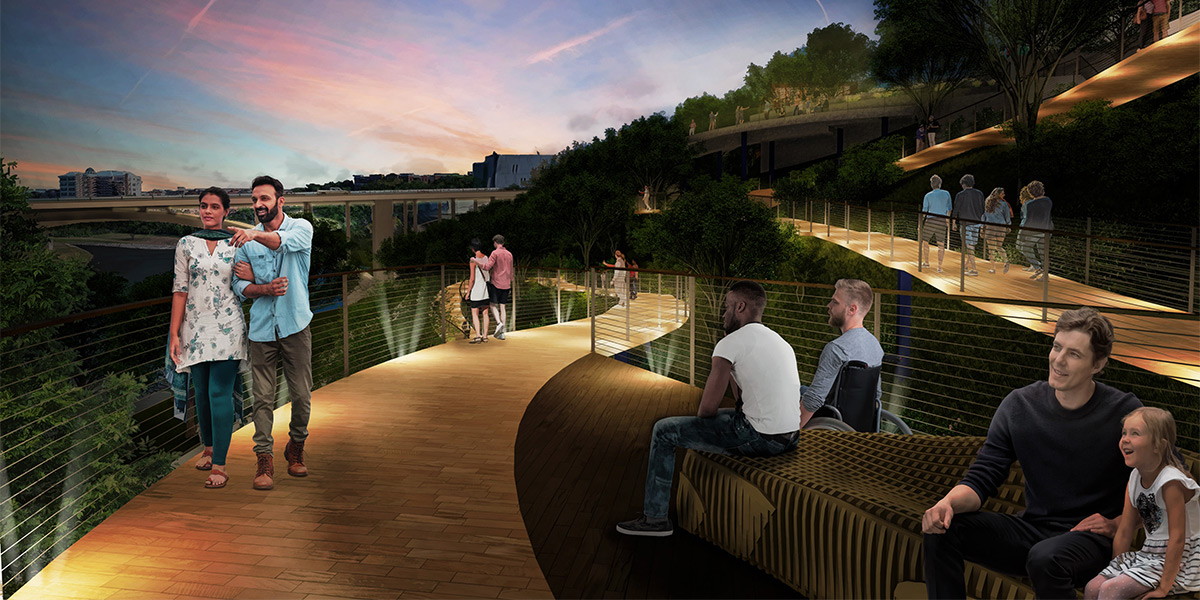“This is a generational project…we’re putting the ‘heritage’ back in Heritage Park,” said Downtown Fort Worth, Inc., President Andy Taft in an interview with the local NBC News affiliate. “People from all over will bring their kids, their families, their friends here to enjoy…this park.”
The historic 110-acre park was built on the site of the original 1849 army outpost, Fort Worth, on a bluff overlooking the Trinity River. It opened to commemorate the US Bicentennial in 1976.
But for the past 15 years, this beautiful spot has stood empty, fenced off for safety reasons, and used by no one.
The Heritage Park project will complete a 100-year vision of re-connecting downtown Fort Worth to the Trinity River. MIG partnered with Downtown Fort Worth Initiatives, Inc. and City of Fort Worth to improve pedestrian safety in the area, provide a civil space to compliment the adjacent Courthouse, provide an accessible path that connects downtown with the Trinity River, and offer a range of additional public spaces where the entire community can gather, linger and celebrate.
Work on Heritage Park started in February 2021 and proved to be a technically challenging and complicated, with steep grades, existing points of connections that need to remain, an accessible path that must navigate a 75' elevation change between easements and historic buildings, multiple landowners and regulatory entities. “The grading challenges were intensely complicated and exacting—getting the design to actually work given the constraints was a feat of number crunching, trial and error and more trials, coupled with poetry, vision and finesse,” said Melissa Erikson, MIG Director of Community Design Services. Some of the Park elements include:
- A Plaza at the top of the park with a water feature, for gathering and events.
- Canopy Walk that zig zags down the bluff, descending though the tree canopy and offering new visuals at every turn.
- River Stairs where the Canopy Walk meets the Trinity River, with space for gathering and a connection to the Trinity River Trails.
The park itself tells the story of the area, noting the sea and marine fossils, limestone formations, dinosaurs, oil and gas, the river, and the many people who have lived there.
The $32 million project is scheduled to be completed in late 2026.



